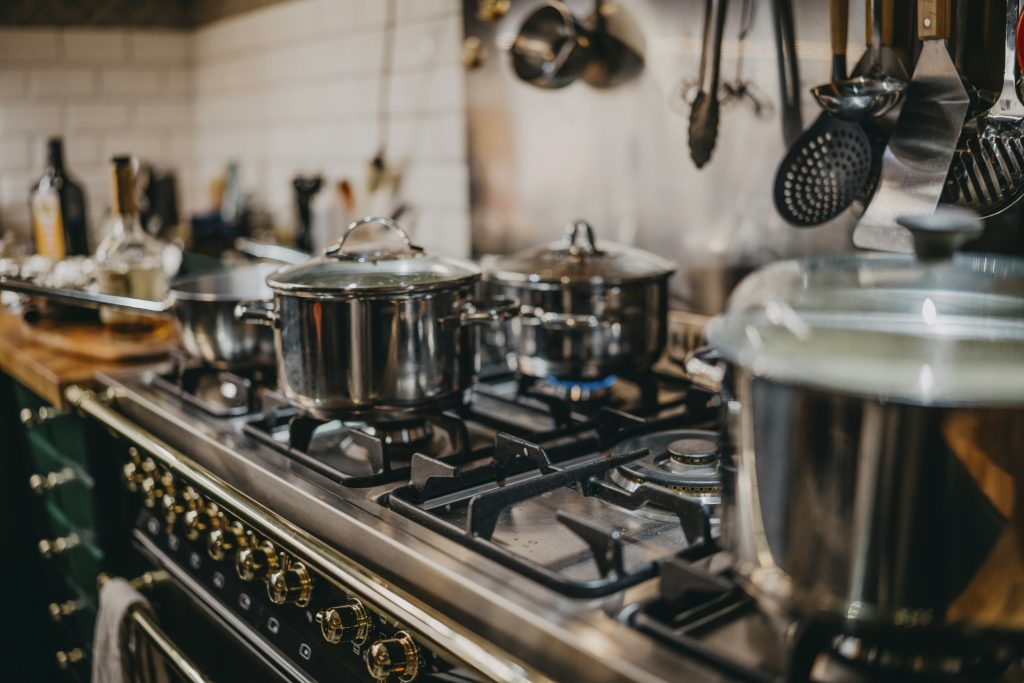In the bustling modern kitchen, where time is often a luxury, one appliance stands out as a true hero: the pressure cooker. Once relegated to specialty cookware, pressure cookers have evolved remarkably from kitchen aids to culinary companions.

Fortune Business Insights states that the pressure cooker market in the US is segregated by capacity. There are pressure cookers with capacities of 1-2 liters, 2-5 liters, 5-8 liters, and 8 liters by capacity.
In this article, we journey through time to explore the fascinating evolution of pressure cookers.
Contents
Origins of Pressure Cooking
The concept of pressure cooking dates back centuries, with early iterations found in cultures worldwide. Using steam pressure to cook food quickly and efficiently fascinated inventors and cooks alike.
However, it wasn’t until the 17th century that the first rudimentary pressure cooker, known as the “digester,” appeared in Europe. These early pressure cookers were often large, cumbersome cast iron or copper vessels. They were primarily used for cooking tough meats and preserving food.
The Modernization of Pressure Cookers
Fast forward to the 20th century, and pressure cookers significantly transformed. With advancements in materials and technology, pressure cookers became more accessible and safer to use. Aluminum and stainless steel replaced cast iron and copper, making them lighter and more durable.
The 1950s and 1960s saw a surge in the popularity of pressure cookers, fueled by a growing interest in convenience cooking. Companies like Presto and Mirro introduced affordable, mass-produced models that found their way into kitchens across America.
Pressure cookers promised to revolutionize meal preparation, offering faster cooking times and the ability to tenderize even the most brutal cuts of meat. In standard pots, water boils constantly at 100 degrees Celsius. However, as an NCBI article mentions, the pressure cooker’s sealed environment raises the temperature to 125 degrees Celsius.
However, despite their convenience, pressure cookers still had their drawbacks. They required close monitoring and adjustment of pressure levels, and the hissing sounds they emitted could be intimidating to novice cooks. As a result, pressure cookers fell out of favor in the latter half of the 20th century, overshadowed by newer kitchen gadgets.
The Resurgence of Pressure Cooking
Despite their decline in popularity, pressure cookers never truly disappeared from the culinary landscape. They have experienced a remarkable resurgence in recent years, thanks partly to a growing interest in home cooking and healthy eating.
Busy home cooks, eager to save time and energy, rediscovered the benefits of pressure cooking, leading to a renewed demand for them. The 21st century brought a new generation of pressure cookers with innovative features and technologies.
Electric pressure cookers, such as the Instant Pot, became household staples. They offer programmable settings and one-touch operation. These multi-functional devices can saute, steam, slow cook, and even make yogurt, catering to various cooking needs.
Safety features such as pressure release valves and locking mechanisms were introduced. This helped address concerns about explosions and accidents that plagued earlier models. However, explosions are still possible if they are not handled with care.
According to TorHoerman Law, pressure cookers today have numerous safety features to prevent the pressure within the pot from erupting quickly. However, defective products and malfunctioning parts can still result in explosions. This can lead to severe second or third-degree burns all over the body, especially the face, neck, and hands.
Since faulty appliances cause these burns, the victims usually file a pressure cooker explosion lawsuit against manufacturers. They seek compensation for the medical expenses to treat the burns and other damages.
The Benefits of Pressure Cooking
What sets pressure cookers apart from other kitchen appliances is their ability to cook food quickly while retaining flavor, nutrients, and moisture. By trapping steam inside a sealed chamber, pressure cookers create a high-pressure environment that accelerates cooking.
Pressure cooking is particularly well-suited for tough cuts of meat, beans, grains, and legumes, typically requiring long cooking times to become tender. These ingredients can be perfectly cooked in minutes with a pressure cooker, making it ideal for busy weeknight dinners.
There are also different settings available to cook different types of food. For instance, an article from The Daily Meal mentions using the saute function to cook meat. You can sear the meat in the cooker by using the saute function before you add liquid and seal the lid. Searing the meat before pressure cooking helps to create a rich, caramelized flavor.
Moreover, pressure cooking is energy-efficient, consuming less electricity or gas than conventional cooking methods. Its sealed design prevents heat and moisture from escaping, reducing cooking times and energy consumption. This makes pressure cookers a time-saving and eco-friendly choice for conscientious consumers.
The Future of Pressure Cooking
As pressure cookers continue to evolve and adapt to the changing needs of consumers, the future looks bright for these kitchen heroes. Advancements in technology, such as smart pressure cookers with Wi-Fi connectivity and app integration, promise to make pressure cooking even more convenient and accessible.
Furthermore, awareness of sustainability and food waste is growing. Pressure cookers may be vital in reducing food waste by making it easier to cook with lesser-known meat cuts and leftover ingredients.
Moreover, even the production and manufacturing of pressure cookers can become sustainable over time. This can further increase the adoption of these devices even by those who favor sustainability. The good thing is that the number of people who favor it is growing. A recent US adult survey from Sustainable Brands revealed that two-thirds of the participants were ready to pay more for sustainable products.
Frequently Asked Questions
What Is the Oldest Pressure Cooker Brand?
The oldest pressure cooker brand is Presto, founded in 1905. Since its inception, Presto has been a pioneer in developing and refining pressure cookers, providing households with reliable and efficient cooking solutions.
Who Is the Father of Pressure Cookers?
French physicist Denis Papin invented the pressure cooker in 1679. His device utilized steam pressure to cook food quickly and efficiently, laying the foundation for modern pressure cookers and revolutionizing how people cooked their meals.
What Is the Principle of Pressure Cooker?
The principle behind a pressure cooker is simple yet effective. By sealing the cooking vessel tightly and trapping steam inside, pressure cookers raise the internal pressure, increasing the water’s boiling point. This higher temperature cooks food faster while retaining nutrients and flavors. Pressure buildup also helps tenderize tough cuts of meat and reduce cooking times significantly, making pressure cookers a versatile and time-saving kitchen appliance.
To conclude, from their humble beginnings to their current status as indispensable kitchen companions, pressure cookers have come a long way. Their evolution reflects advancements in technology and manufacturing and shifts in culinary trends and consumer preferences.
With their ability to cook food quickly, efficiently, and deliciously, they have earned their place alongside other essential kitchen appliances. As we look to the future, it’s clear that pressure cookers will continue to play a significant role in shaping how we cook.
